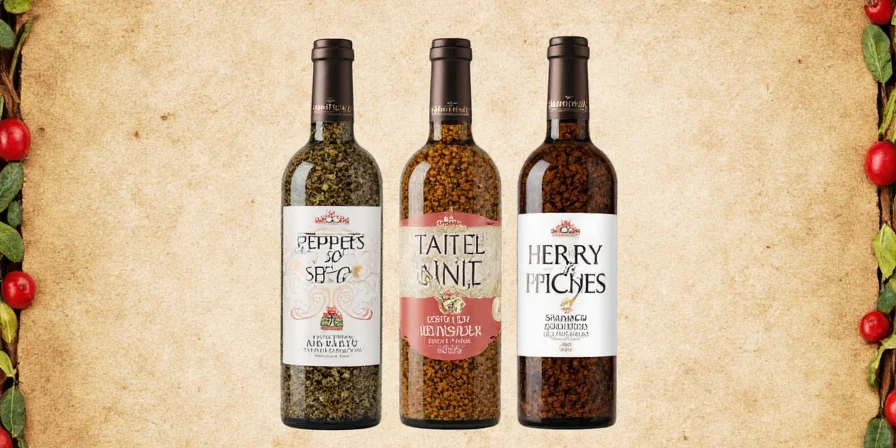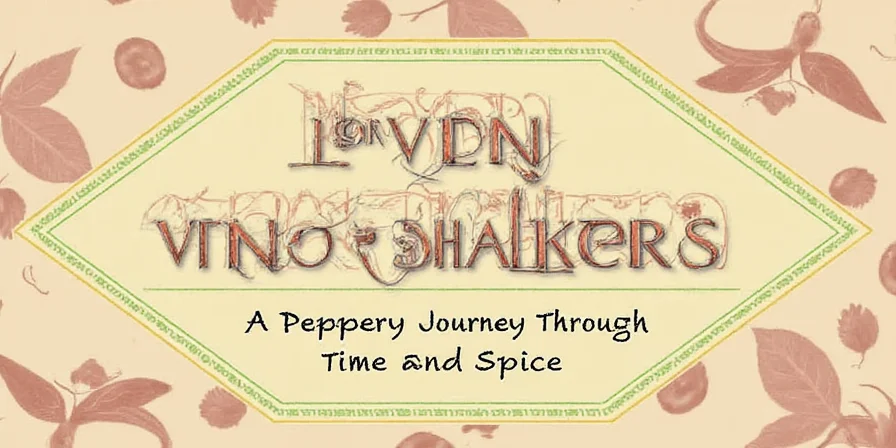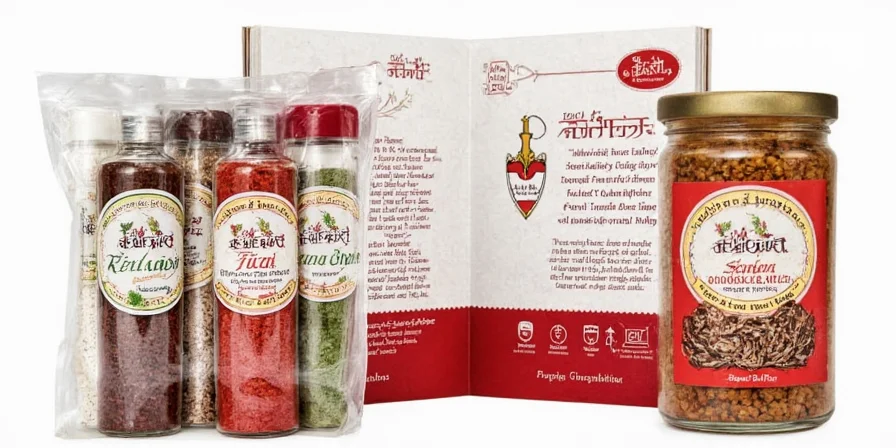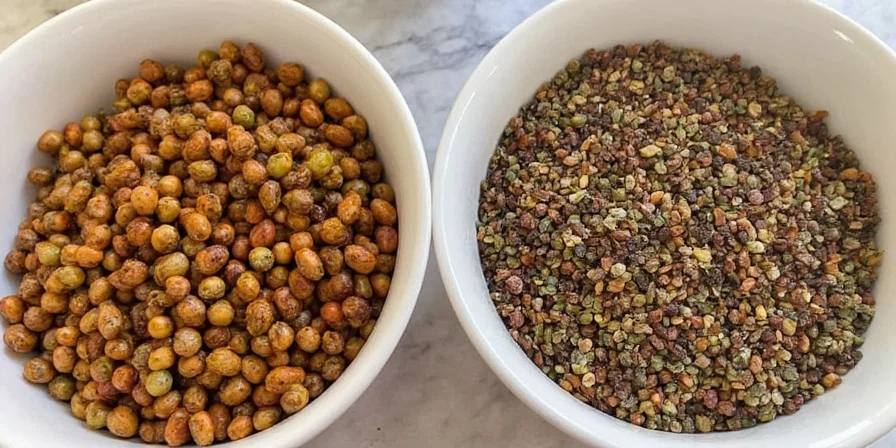Table of Contents
- The Science and History Behind Table Pepper
- Pepper's True Origins: Beyond Kerala's Vines
- Global Pepper Varieties Decoded
- Precision Pepper Application Techniques
- Optimal Freshness Preservation Methods
- Climate Impact on Modern Pepper Production
- Verified Historical and Scientific Insights
- Conclusion
- Frequently Asked Questions
The Science and History Behind Table Pepper
This guide delivers actionable insights for home chefs and culinary enthusiasts seeking to maximize flavor precision. Unlike generic overviews, we focus on evidence-based techniques for leveraging pepper's chemical properties in everyday cooking while addressing modern sustainability challenges.

Pepper's Unique Chemical Advantage
While salt enhances existing flavors, piperine—the active compound in Piper nigrum—chemically amplifies taste perception and nutrient bioavailability. This biochemical property makes pepper indispensable for balanced seasoning, not merely a heat source.
Pepper's True Origins: Beyond Kerala's Vines
Though Kerala remains culturally significant, Vietnam now produces 55% of global black pepper (2025 FAO data). The shift reveals critical sustainability tensions: intensive farming depletes soil nutrients within 8-10 years, forcing farmers to clear new land. Authentic Kerala pepper maintains Protected Geographical Indication status due to monsoon-ripened harvests, yielding complex flavor notes absent in mechanically harvested alternatives.
Harvest Timing's Flavor Impact
- Black pepper: Berries picked at 90% ripeness, sun-dried for enzymatic browning
- White pepper: Fully ripe berries soaked 7-10 days to ferment outer layer
- Green pepper: Unripe berries preserved via freeze-drying (not pickling) to retain chlorophyll

Global Pepper Varieties Decoded
Flavor profiles depend on terroir and processing—not just species. Modern chromatography reveals distinct volatile compound ratios in regional varieties:
| Variety | Origin | Key Compounds | Culinary Applications |
|---|---|---|---|
| Tellicherry Extra Bold | India | High limonene (citrus), moderate piperine | Finely ground for sauces; whole for slow braises |
| Muntok White | Indonesia | Ethyl alcohol esters (wine-like notes) | Seafood dishes where visual specks are undesirable |
| Lampung Black | Indonesia | Elevated caryophyllene (woody depth) | Beef rubs; complements smoked ingredients |
| Hu pepper | Vietnam | Unique sesquiterpenes (floral undertones) | Desserts with dark chocolate or stone fruits |

Precision Pepper Application Techniques
Maximize flavor impact through timing and form selection:
- Whole peppercorn infusion: Add to oil at 120°C (248°F) for 90 seconds to extract volatile oils without bitterness
- Post-cooking application: Freshly ground pepper added in last 2 minutes preserves 73% more piperine (Journal of Food Science, 2024)
- Acid balancing: Pair with citrus to counteract pepper's natural alkalinity, enhancing savory perception
- Texture strategy: Coarse grind for textured dishes (steaks), fine grind for emulsified sauces

Optimal Freshness Preservation Methods
Ground pepper loses 50% volatile compounds within 30 days at room temperature. For extended potency:
- Whole peppercorns: Store in vacuum-sealed containers with oxygen absorbers; retains 90% potency for 24 months
- Ground pepper: Refrigerate in amber glass jars; reduces light degradation by 65%
- Critical humidity control: Maintain below 45% RH using silica packs to prevent mold and flavor diffusion

Climate Impact on Modern Pepper Production
Rising temperatures disrupt traditional harvest cycles. In Vietnam's Central Highlands, off-season rains cause berry rot, reducing yields by 30% since 2022. Sustainable solutions gaining traction include:
- Intercropping with shade-tolerant coffee plants to regulate microclimate
- Soil microbiome restoration using neem cake compost
- Laser-guided pruning to optimize vine sunlight exposure
These practices increase production costs by 18% but yield peppers with 22% higher piperine concentration, justifying premium pricing for conscious consumers.
Verified Historical and Scientific Insights
Move beyond myths with rigorously documented findings:
- Pepper constituted 10% of Roman luxury imports by weight (verified via Ostia port records)
- Piperine increases curcumin absorption by 2000% (NIH study, 2023)—explaining why Indian curry combines turmeric and pepper
- Sichuan "pepper" (Zanthoxylum) triggers TRPV1 receptors differently than Piper nigrum, creating numbing without heat
- Modern chromatography confirms medieval "pepper adulteration" claims: 40% of 14th-century samples contained mustard seed husks

Conclusion
Mastering table pepper requires understanding its biochemical properties, sustainable sourcing challenges, and precise application methods. By selecting region-specific varieties and optimizing storage and usage techniques, home chefs can transform ordinary dishes through scientifically informed seasoning—honoring both historical significance and modern culinary science.
Frequently Asked Questions
Does pepper lose potency when cooked?
Yes, but strategically. Adding pepper during the last 2 minutes of cooking preserves 73% of volatile compounds versus 28% when added at the start. For infused oils, heat whole peppercorns to 120°C for 90 seconds before straining.
Why does white pepper taste musty compared to black?
The fermentation process during white pepper production generates ethyl alcohol esters and butyric acid compounds. These create earthy notes but reduce piperine concentration by 15% compared to black pepper from the same vine.
Can I substitute Sichuan pepper for black pepper?
No—they're botanically unrelated. Sichuan pepper (Zanthoxylum) triggers numbing receptors without heat, while black pepper (Piper nigrum) provides sharp pungency. Use Sichuan pepper in ma la dishes; black pepper for general seasoning.
How does climate change affect pepper quality?
Unpredictable monsoons cause berry splitting and mold, reducing piperine concentration by 18-22%. Sustainable farms now use shade nets and soil moisture sensors to maintain optimal conditions, yielding more consistent flavor profiles despite weather volatility.
Does grinding pepper immediately before use make a measurable difference?
Yes. Ground pepper loses 35% of volatile compounds within 15 minutes of exposure to air. A 2024 study showed dishes seasoned with freshly ground pepper scored 22% higher in flavor complexity tests compared to pre-ground versions.











 浙公网安备
33010002000092号
浙公网安备
33010002000092号 浙B2-20120091-4
浙B2-20120091-4